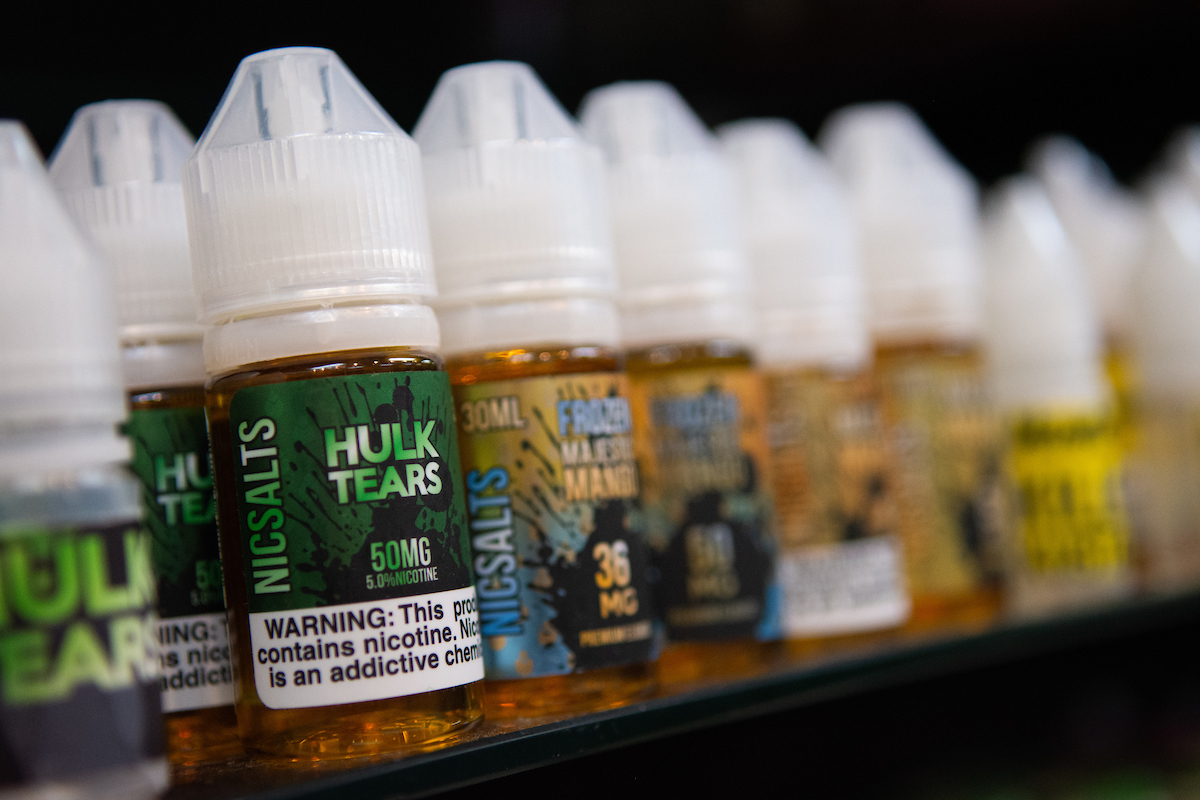State could lose millions in grant money as its youth tobacco sales rate shoots up

Nevada stands to lose up to $7 million a year in funds that flow to substance abuse treatment because too many stores are selling tobacco to minors.
Hillary Bunker, who leads the Tobacco Enforcement Unit within the Nevada Attorney General’s Office, says the state is certain it will end the federal fiscal year with a violation rate of more than 20 percent, meaning it can expect a penalty from the federal government. The violation rate refers to the instances in which retailers are caught selling tobacco to youth under the age of 18, often through undercover sting operations.
The state has never before exceeded the 20 percent threshold and in the most recent fiscal year, had a violation rate of a little more than 13 percent. But as of April, the violation rate had shot up to 29 percent.
The cause behind the rapid rise in the violation rate is still uncertain, but it coincides with an uptick in the number of high school students who describe themselves as current users of tobacco products, from 3.6 million nationwide in 2017 to 4.9 million in 2018.
Those tobacco numbers are driven primarily by a 78 percent year-over-year increase in the number of high schoolers who report vaping in the last 30 days. Vape juice usually contains the addictive substance nicotine, and nicotine is usually derived from the tobacco plant.
Penalties for Nevada exceeding the youth sales threshold include the federal government withholding up to 40 percent of the Substance Abuse Prevention and Treatment Block Grant, which provides about $17 million each year to the state. The funding is the “payer of last resort” for substance abuse rehab services when people are unable to pay the full cost due to insurance limits.
The grant also requires the state to set aside 20 percent to fund prevention activities. That money flows to evidence-based substance abuse prevention activities implemented by coalitions across the state.
Bunker said health officials have said penalties are graduated depending on how egregiously a state exceeds the 20 percent threshold, and that states can agree to take an alternative penalty that would involve dedicating money they would otherwise pay back to the federal government and use that toward prevention activities.
She said the federal government indicated it has never actually withheld the full 40 percent from a state in violation of the youth sales rate.
Bunker said she wishes she knew what could be done to reduce the buy rate, but is not sure whether there is a silver bullet, such as simply doing more compliance checks.
“I don’t think it’s as simple as if you do this one thing, it will fix it,” she said.
Her unit attempts more than 1,000 compliance checks a year using paid teen workers who work when they’re not in school; there are about 3,200 retailers statewide. Prior to 2015, the unit checked every store every year, but is now checking stores based on a formula that helps produce a representative sample useful for statistical purposes.
Officials at the Nevada Department of Health and Human Services say they have started meeting monthly with the tobacco enforcement unit to get updates on the violation rate and discuss remedies. They are trying to get retailers to commit to training their staff about ways to prevent youth sales.
“Currently, there is an increase in efforts to provide education and training to retail violators and increased engagement and funding with the Coalitions to support community level prevention efforts,” state Health Bureau Chief Brook Adie said in an email. “Though funding and efforts are statewide, there is an increased focus on high violation areas such as Clark County, specifically North Las Vegas.”
New legislation passed in the 2019 session could help with the youth sales problem. Current law makes it a misdemeanor for a clerk to sell to a minor, and allows fines of up to $1,000. The new law, which takes effect Jan. 1, 2020 under SB263, decriminalizes the sale to minors and implements civil fines for the clerk ranging from $100 to $500.
Businesses also now have skin in the game under SB263. The bill calls for warnings to the business for the first two violations of the youth sales law and a civil penalty of up to $2,500 for the fifth or subsequent violation within a 24-month period.
Another bill, SB62, specifies that fines of up to $1,000 a day for manufacturers violating cigarette-related reporting regulations flow to tobacco compliance efforts. That money would help support dedicated staff to oversee the Synar program — which requires reporting about youth sales compliance and is named after the Oklahoma congressman who proposed it.
Some initiatives broader than the state could help, too. CVS stopped selling cigarettes in 2014, and Walgreens, Rite Aid and Wal-Mart announced this spring they are voluntarily choosing to limit tobacco sales to people 21 and over. A federal bill backed by Republican Senate Majority Leader Mitch McConnell that limits tobacco sales to people 21 and over could do that, even though Nevada lawmakers failed to advance legislation in the 2019 session to take such steps.
Nevada’s new tax on vaping products that funnels $2.5 million in revenue each year to prevention efforts could also bolster the cause. The state in recent years has skimped on its funding to anti-tobacco efforts, authorizing only about 3 percent of the amount the Centers for Disease Control and Prevention recommends toward prevention.
“We’re hopeful that with some of the legislation that passed and the changes that were made this session, that the buy rate will drop,” Bunker said.
